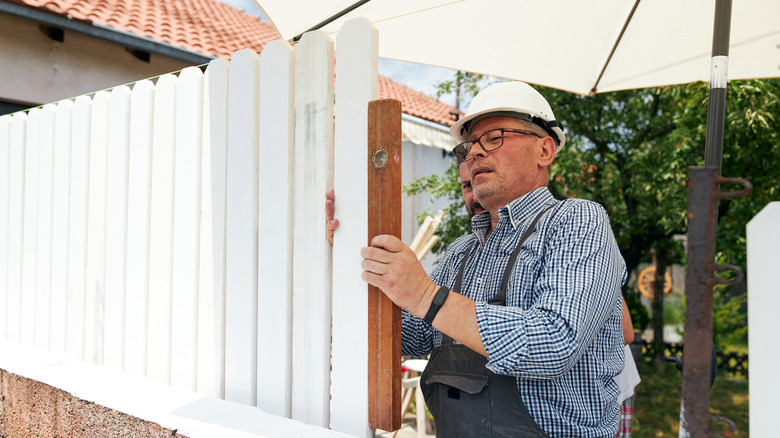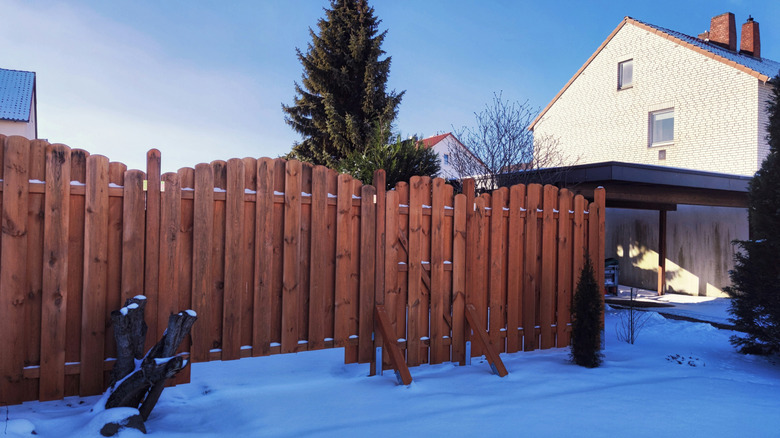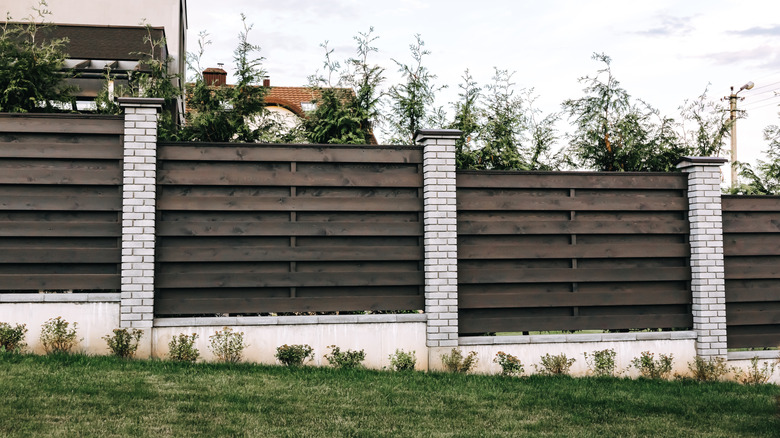The Wood Fence Type That'll Add Stylish Privacy To Your Backyard
Adding a fence to your property has so many advantages. There's the visual appeal based on the numerous style options available — from white vinyl and ornamental metal to wood picket and lattice. Privacy is just as important, and there's a plethora of options in that regard as well. For example, post and rail fencing works great if privacy isn't a concern, while the popular, modern louver fencing takes it up a notch with the option for a considerable amount of privacy thanks to adjustable slats. But what if you need maximum privacy and want beauty too? Board-on-board fencing gives everything you want for your backyard, including visually attractive styling and ultimate privacy.
Board-on-board fencing isn't just a two-for-one deal, either. This type of fencing is quite durable in harsh weather conditions, like strong winds, due to its tightly overlapping boards. It's also visually appealing from both sides — you and your neighbors can enjoy the aesthetic instead of being subjected to an eyesore.
What is board-on-board fencing?
Board-on-board fencing, also known as board and batten, comprises panels (usually wood) in an overlapping vertical or horizontal pattern. The individual pieces consist of larger pickets alternating with smaller strips known as the battens, hence the name. Due to the alternating design, there is a slight overlap between the layers, allowing for complete privacy.
What makes this type of fencing clever is how this design allows for shrinking, warping, and general shifting of the wood. Even with all these movements, you're far less likely to end up with gaps between the fence pickets. In fences where the pickets don't overlap, these gaps make it possible for passersby to peek through and see your property — not something you want if you value privacy.
Wood isn't the only material you can use with board-on-board fencing. While shrinkage and expansion are not an issue with wood fencing of this style, you can always ditch this material, opt for vinyl, and not worry about weather-related warping at all. Vinyl pickets for a board-on-board fence are also great way to go if you want to spend less time and effort on maintenance.
Things to consider before installing a board-on-board fence
The first factor to consider is cost. Board-on-board fencing is about 30% more expensive than other types, but it's for good reason — the privacy is unmatched, and the aesthetic is flawless. When weighing the costs, decide whether you'll install the fence yourself or call professionals, since the latter will obviously add to your expenses. That said, board-on-board fencing requires detailed and precise installation, so if you want to avoid mistakes when installing your fence, hiring a licensed and insured professional is worth the added costs.
Another important thing you need to do before you install a board-on-board fence — or any fence, for that matter — is get a building permit. Chances are that the fence will need to be approved by the planning officials, who will make sure that it complies with local zoning bylaws. The building regulations and zoning requirements vary between jurisdictions, so reach out to your county or town building department to obtain more information. If you live in a community with a homeowners' association (HOA), check the bylaws, because you may need to get it approved with the HOA, too.


